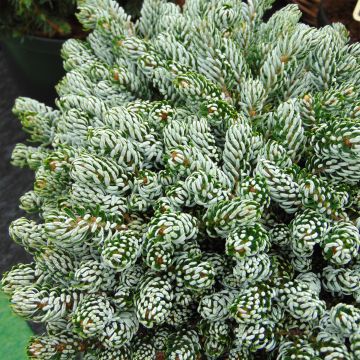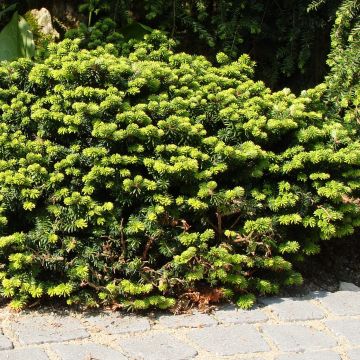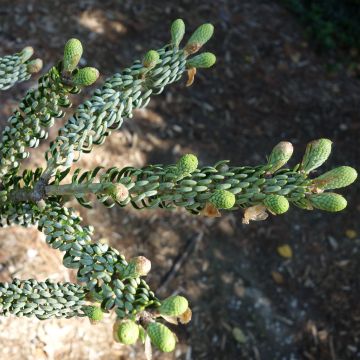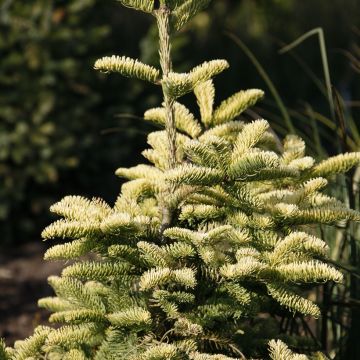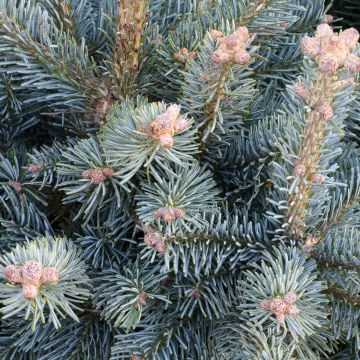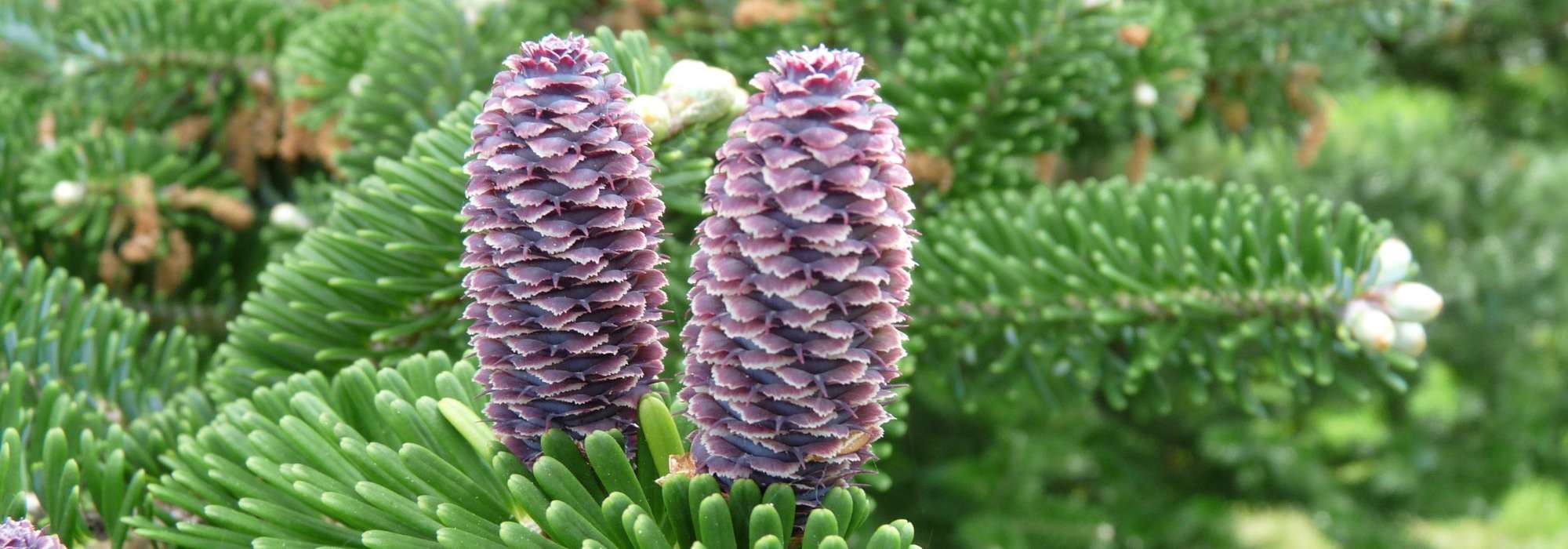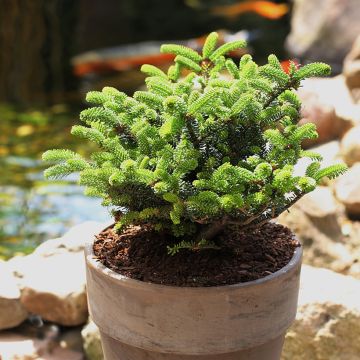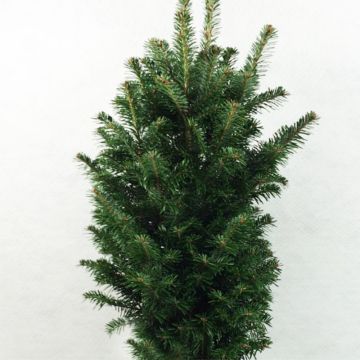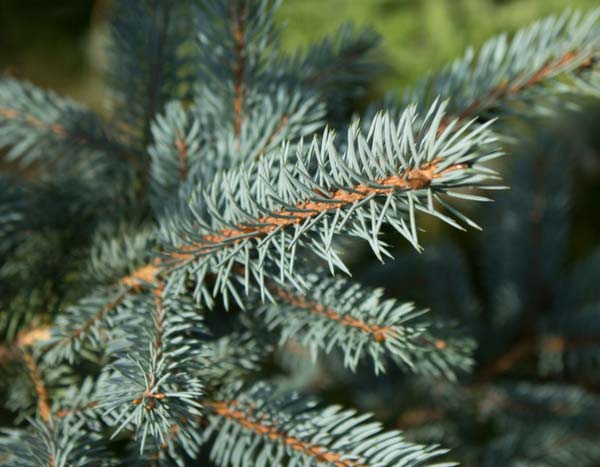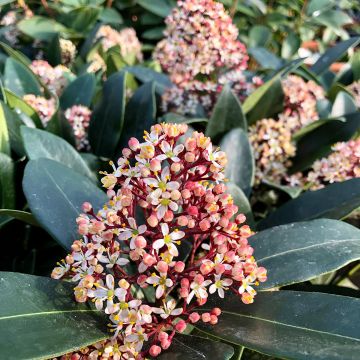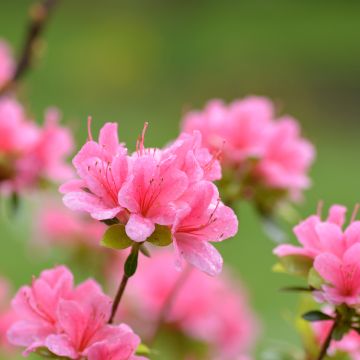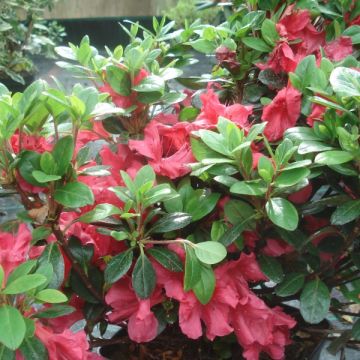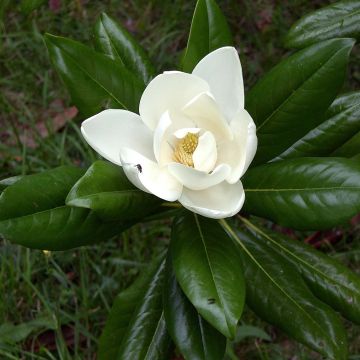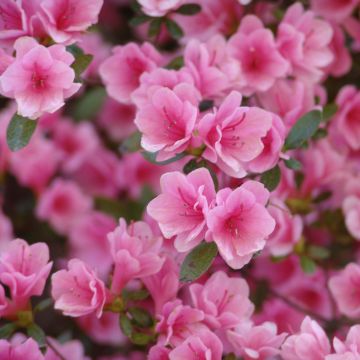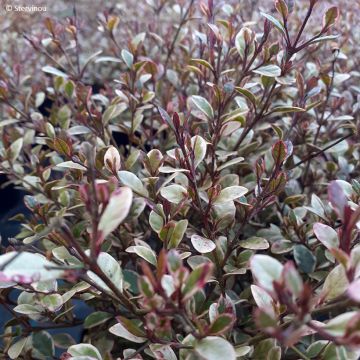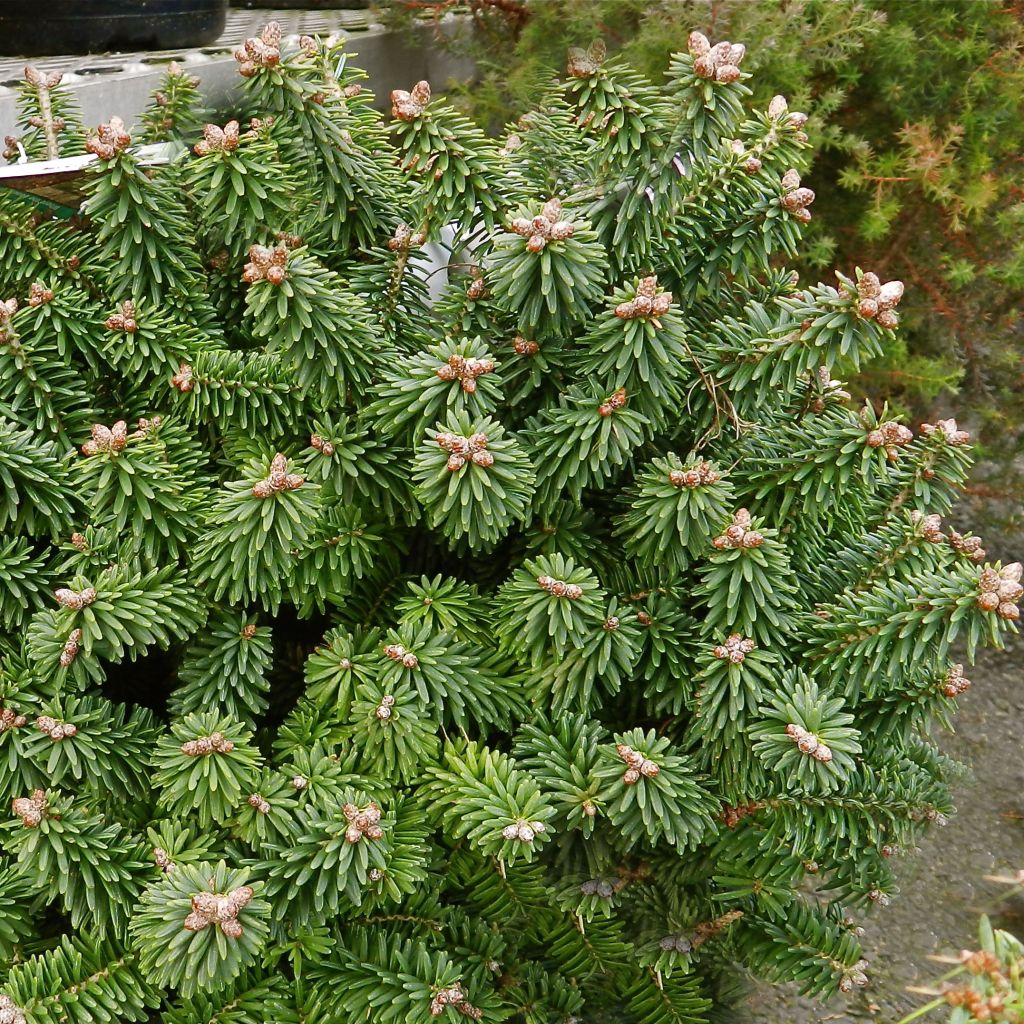

Abies balsamea Piccolo - Sapin baumier nain
Abies balsamea Piccolo
Abies balsamea Piccolo
Balsam Fir
But not in accordance with the web description of 15/20cm (6/8in), it is only 10cm (4in). It is really too small to be marketed. What a pity.
Louis Bernard S., 17/10/2017
Special offer!
Receive a €20 voucher for any order over €90 (excluding delivery costs, credit notes, and plastic-free options)!
1- Add your favorite plants to your cart.
2- Once you have reached €90, confirm your order (you can even choose the delivery date!).
3- As soon as your order is shipped, you will receive an email containing your voucher code, valid for 3 months (90 days).
Your voucher is unique and can only be used once, for any order with a minimum value of €20, excluding delivery costs.
Can be combined with other current offers, non-divisible and non-refundable.
Why not try an alternative variety in stock?
View all →This plant carries a 24 months recovery warranty
More information
We guarantee the quality of our plants for a full growing cycle, and will replace at our expense any plant that fails to recover under normal climatic and planting conditions.
Would this plant suit my garden?
Set up your Plantfit profile →
Description
Abies balsamea 'Piccolo' is a dwarf variety of balsam fir, with a stout and very compact habit, and fine, soft to the touch, dark green foliage. In spring, its brown and prominent buds at the end of almost vertical branches bring colour to the whole. With its slow growth and small size, it is perfect for small gardens, rockeries or containers.
The balsam fir is a conifer of the pine family, native to North America, which reaches a height of 15 to 20 m (49 to 66ft) and forms a trunk of 60 cm (24in) in diameter in its natural environment. The 'Piccolo' form is an improvement of the 'nana' variety, which is a miniature version of this species. It will not exceed 45 cm (18in) in height and 65 cm (26in) in diameter, after many years. It has a compact habit, first round, then more spreading, and forms a large, very soft cushion made up of upright branches where very fine and very flexible needles are inserted like a brush. Its large spring buds crown its dark green foliage with a velvety brown and lime green. It should be noted that this variety, like the species, is impregnated with a fragrant resin (balsam) exuding a very pleasant spicy fragrance.
Abies balsamea 'Piccolo' is ideal for container cultivation on a terrace or in small gardens thanks to its slow growth and small size. With its dense cushion-like silhouette, it will work well in rockeries, especially if planted in groups of 3 subjects. The architectural qualities of dwarf conifers naturally blend into the creation of a contemporary garden, which prefers the aesthetics of shapes, silhouettes and textures over those of flowers. These plants with strong personalities structurally and durably shape a bed, mark pathways and border the terrace, easily replacing the strong presence of trimmed boxwood. They serve as a backdrop for small roses, peonies, or tousled grasses with very complementary forms. They can also be associated with ground cover plants such as aubrietas or ceraistes, and flowering shrubs. The key is to play with volumes and colours.
Abies balsamea Piccolo in pictures
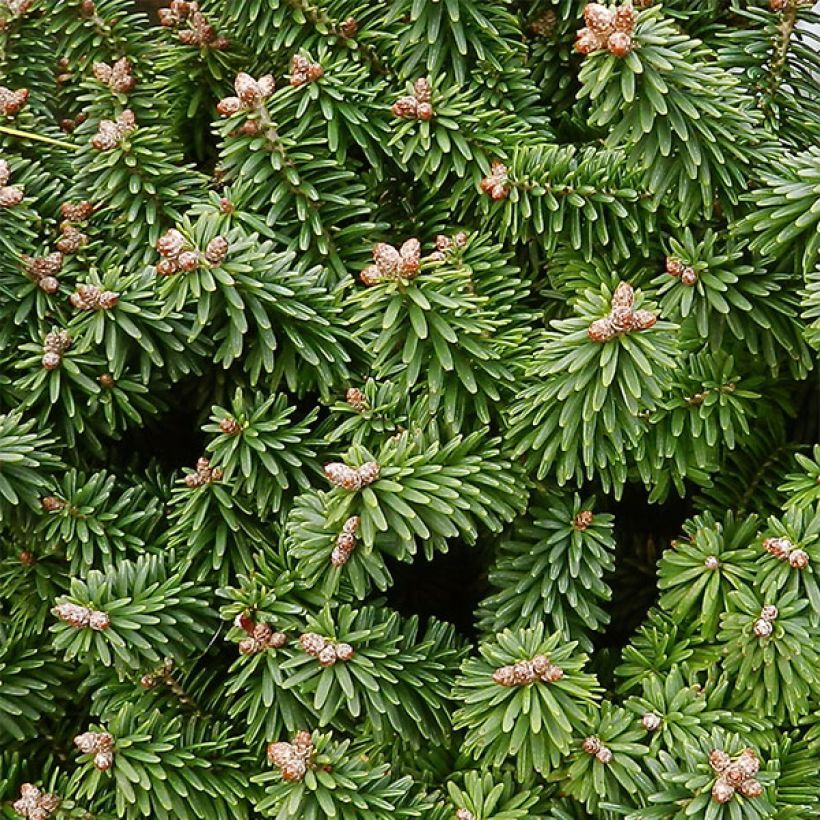



Plant habit
Foliage
Botanical data
Abies
balsamea
Piccolo
Pinaceae
Balsam Fir
Cultivar or hybrid
Other Abies
View all →Planting and care
Plant Abies balsamea 'Picolo' from September to November or from February to June, in regular soil, enriched with humus, not too dry, in full sun or partial shade. Regularly water the young plants during the two to three summers following the planting. The balsam fir can withstand periods of drought, but it will be necessary to water it during prolonged periods of intense heat. This bush does not require pruning, but any unsightly or obstructive branches can be removed.
Planting period
Intended location
Care
Planting & care advice
-
, onOrder confirmed
Reply from on Promesse de fleurs
Similar products
Haven't found what you were looking for?
Hardiness is the lowest winter temperature a plant can endure without suffering serious damage or even dying. However, hardiness is affected by location (a sheltered area, such as a patio), protection (winter cover) and soil type (hardiness is improved by well-drained soil).

Photo Sharing Terms & Conditions
In order to encourage gardeners to interact and share their experiences, Promesse de fleurs offers various media enabling content to be uploaded onto its Site - in particular via the ‘Photo sharing’ module.
The User agrees to refrain from:
- Posting any content that is illegal, prejudicial, insulting, racist, inciteful to hatred, revisionist, contrary to public decency, that infringes on privacy or on the privacy rights of third parties, in particular the publicity rights of persons and goods, intellectual property rights, or the right to privacy.
- Submitting content on behalf of a third party;
- Impersonate the identity of a third party and/or publish any personal information about a third party;
In general, the User undertakes to refrain from any unethical behaviour.
All Content (in particular text, comments, files, images, photos, videos, creative works, etc.), which may be subject to property or intellectual property rights, image or other private rights, shall remain the property of the User, subject to the limited rights granted by the terms of the licence granted by Promesse de fleurs as stated below. Users are at liberty to publish or not to publish such Content on the Site, notably via the ‘Photo Sharing’ facility, and accept that this Content shall be made public and freely accessible, notably on the Internet.
Users further acknowledge, undertake to have ,and guarantee that they hold all necessary rights and permissions to publish such material on the Site, in particular with regard to the legislation in force pertaining to any privacy, property, intellectual property, image, or contractual rights, or rights of any other nature. By publishing such Content on the Site, Users acknowledge accepting full liability as publishers of the Content within the meaning of the law, and grant Promesse de fleurs, free of charge, an inclusive, worldwide licence for the said Content for the entire duration of its publication, including all reproduction, representation, up/downloading, displaying, performing, transmission, and storage rights.
Users also grant permission for their name to be linked to the Content and accept that this link may not always be made available.
By engaging in posting material, Users consent to their Content becoming automatically accessible on the Internet, in particular on other sites and/or blogs and/or web pages of the Promesse de fleurs site, including in particular social pages and the Promesse de fleurs catalogue.
Users may secure the removal of entrusted content free of charge by issuing a simple request via our contact form.
The flowering period indicated on our website applies to countries and regions located in USDA zone 8 (France, the United Kingdom, Ireland, the Netherlands, etc.)
It will vary according to where you live:
- In zones 9 to 10 (Italy, Spain, Greece, etc.), flowering will occur about 2 to 4 weeks earlier.
- In zones 6 to 7 (Germany, Poland, Slovenia, and lower mountainous regions), flowering will be delayed by 2 to 3 weeks.
- In zone 5 (Central Europe, Scandinavia), blooming will be delayed by 3 to 5 weeks.
In temperate climates, pruning of spring-flowering shrubs (forsythia, spireas, etc.) should be done just after flowering.
Pruning of summer-flowering shrubs (Indian Lilac, Perovskia, etc.) can be done in winter or spring.
In cold regions as well as with frost-sensitive plants, avoid pruning too early when severe frosts may still occur.
The planting period indicated on our website applies to countries and regions located in USDA zone 8 (France, United Kingdom, Ireland, Netherlands).
It will vary according to where you live:
- In Mediterranean zones (Marseille, Madrid, Milan, etc.), autumn and winter are the best planting periods.
- In continental zones (Strasbourg, Munich, Vienna, etc.), delay planting by 2 to 3 weeks in spring and bring it forward by 2 to 4 weeks in autumn.
- In mountainous regions (the Alps, Pyrenees, Carpathians, etc.), it is best to plant in late spring (May-June) or late summer (August-September).
The harvesting period indicated on our website applies to countries and regions in USDA zone 8 (France, England, Ireland, the Netherlands).
In colder areas (Scandinavia, Poland, Austria...) fruit and vegetable harvests are likely to be delayed by 3-4 weeks.
In warmer areas (Italy, Spain, Greece, etc.), harvesting will probably take place earlier, depending on weather conditions.
The sowing periods indicated on our website apply to countries and regions within USDA Zone 8 (France, UK, Ireland, Netherlands).
In colder areas (Scandinavia, Poland, Austria...), delay any outdoor sowing by 3-4 weeks, or sow under glass.
In warmer climes (Italy, Spain, Greece, etc.), bring outdoor sowing forward by a few weeks.






























